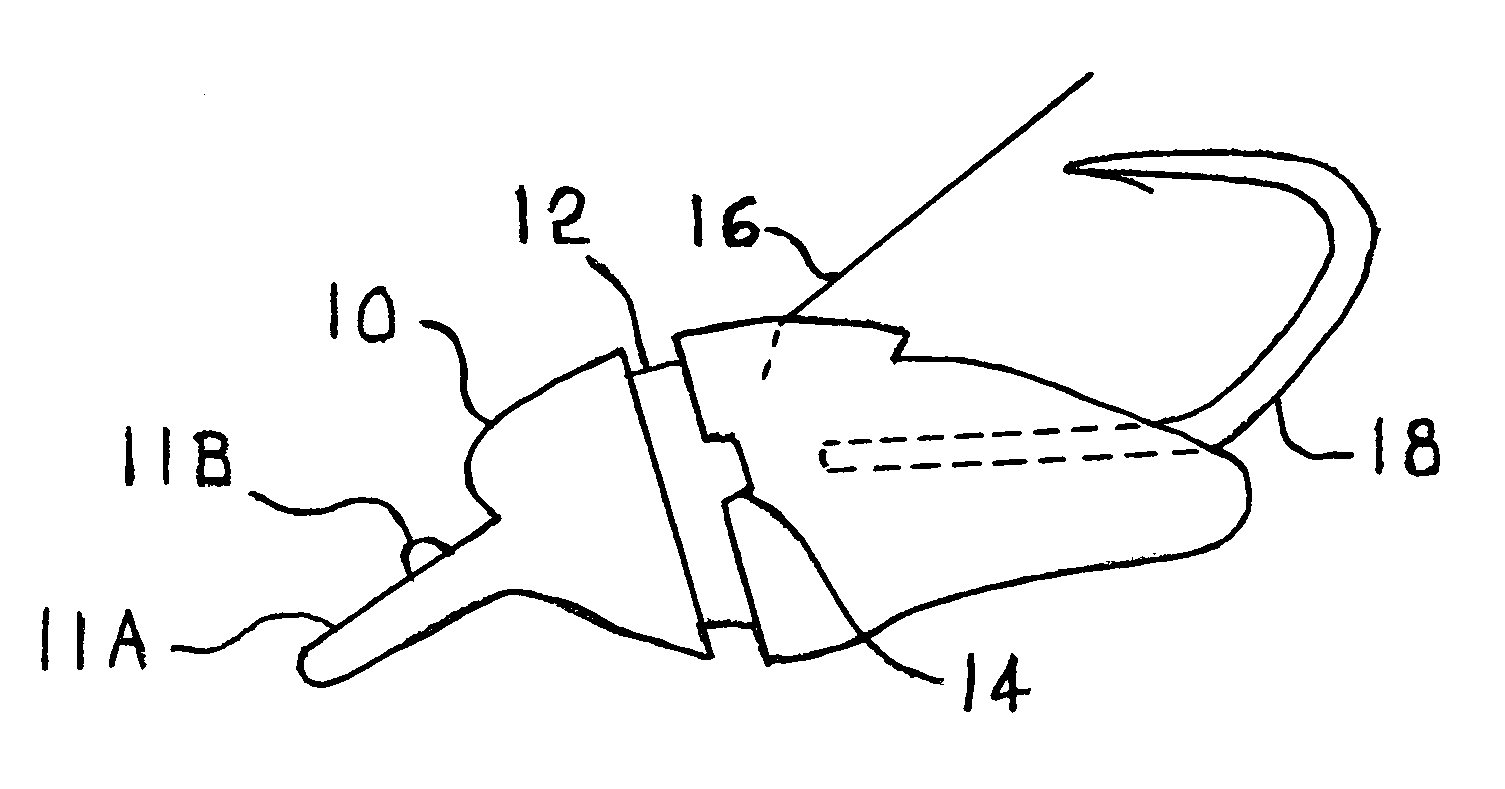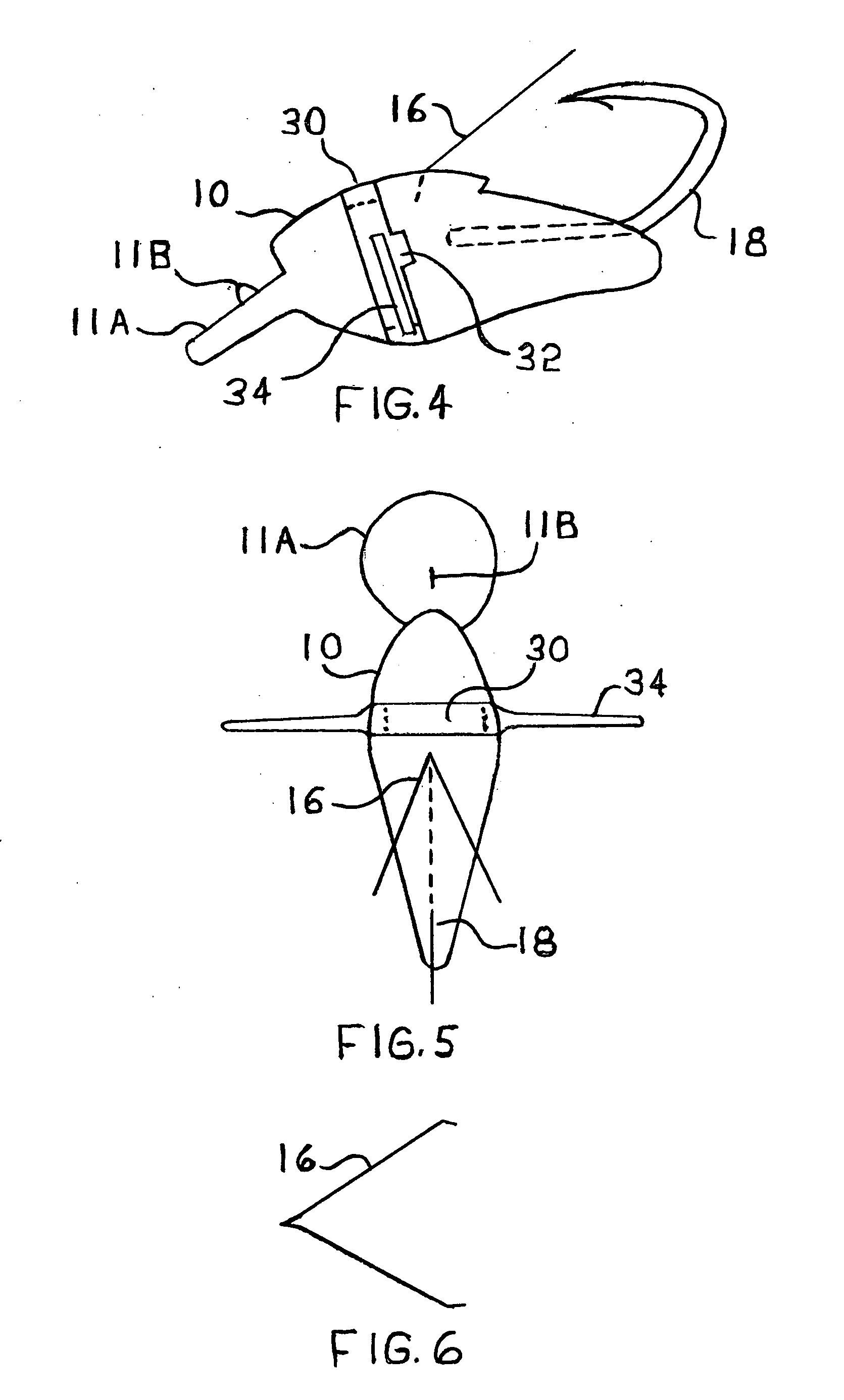Snagless artificial fishing lure with pectoral appendages, and with a snag guard and top-mounted hook configuration
a technology pectorals, which is applied in the field of artificial fishing lures, can solve the problems of significant compromise of hooking and landing ability, affecting the ability of landing fish, and affecting the ability of fishing, so as to reduce the resistance force of water, maximize the free and sensitive movement of such appendages, and improve the positioning of the collar on the lure body
- Summary
- Abstract
- Description
- Claims
- Application Information
AI Technical Summary
Benefits of technology
Problems solved by technology
Method used
Image
Examples
Embodiment Construction
—Preferred Embodiment
[0034]A preferred embodiment of the present invention is illustrated in FIG. 1 (top view), FIG. 2 (side view), FIG. 3 (detail of collar), FIG. 4 (side view with collar in place), FIG. 5 (top view with collar in place) and FIG. 6 (detail of snag guard). As shown in FIG. 1, the preferred embodiment, a crankbait lure, has a main lure body 10 preferably comprised of hard plastic. It could also be made of other materials such as hard rubber, wood, metal, etc. The lure body includes a diving bill or lip 11A which causes the lure body 10 to dive downward into the water when the lure is retrieved by the fisherman after casting. An eyelet 11B is manufactured into the diving bill or lip 11A, or the lure body 10, and is used for tying a fishing line to the lure itself. Encircling the lure body 10 is a channel 12 that receives the collar 30 and contains the collar 30 while the lure body 10 is in use by the fisherman. The collar 30 is also held in place within the channel 12...
PUM
 Login to View More
Login to View More Abstract
Description
Claims
Application Information
 Login to View More
Login to View More - R&D
- Intellectual Property
- Life Sciences
- Materials
- Tech Scout
- Unparalleled Data Quality
- Higher Quality Content
- 60% Fewer Hallucinations
Browse by: Latest US Patents, China's latest patents, Technical Efficacy Thesaurus, Application Domain, Technology Topic, Popular Technical Reports.
© 2025 PatSnap. All rights reserved.Legal|Privacy policy|Modern Slavery Act Transparency Statement|Sitemap|About US| Contact US: help@patsnap.com



